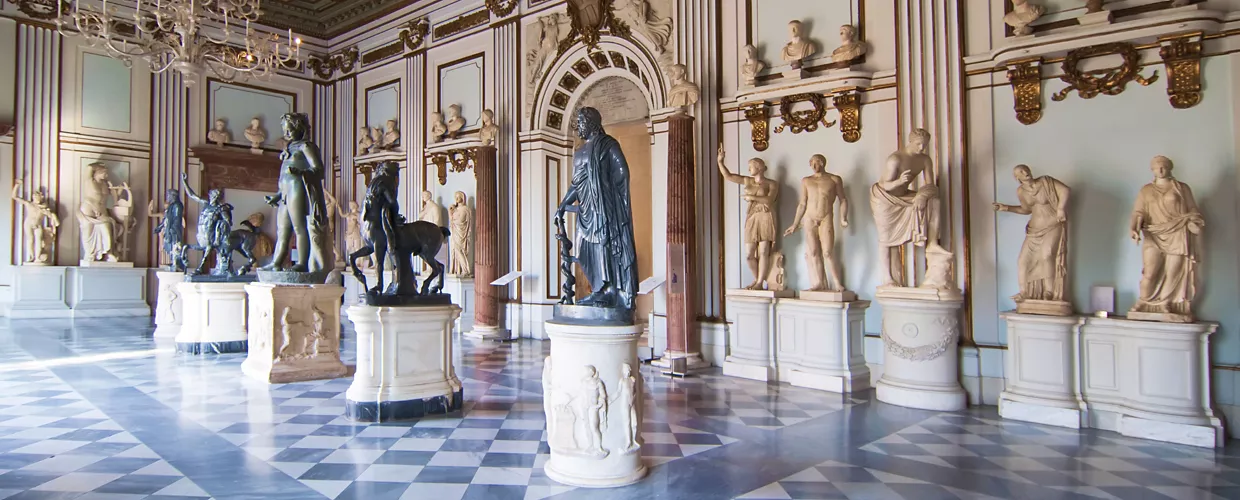
Overview
When Pope Sixtus IV donated a group of bronze statues to the Roman people in 1471, he may not have realised that he was creating the first nucleus of the Capitolini Museums.
The Lupa, the Spinario, the Camillus and the colossal head of Constantine, with his hand and globe, were moved from the Lateran to the Campidoglio, the centre of religious and political life in ancient and medieval Rome.
Relocating some remnants of past greatness to the most symbolic spot in the city had a strong symbolic value.
First placed on the external façade and in Palazzo dei Conservatori's courtyard, the original core was soon enriched by subsequent acquisitions.
The colossal statue of Marcus Aurelius was only brought from the Lateran, by will of Pope Paul III, in 1538.
His successors also enhanced the antiquarian collection with various donations, but it was in 1734, when Pope Clement XII bought the prestigious Albani Collection that was about to be sold to English collectors and opened the museum to the people, that the Capitolini became the oldest public museum in the world.
Large quantities of artefacts emerged from the various excavations undertaken after the Unification of Italy, which were in time partially exhibited at the Capitolini.
A branch office was opened in 1997 at the Centrale Montemartini, in the Ostiense district, creating a new exhibition space that created a good combination of industrial archaeology and classical archaeology.